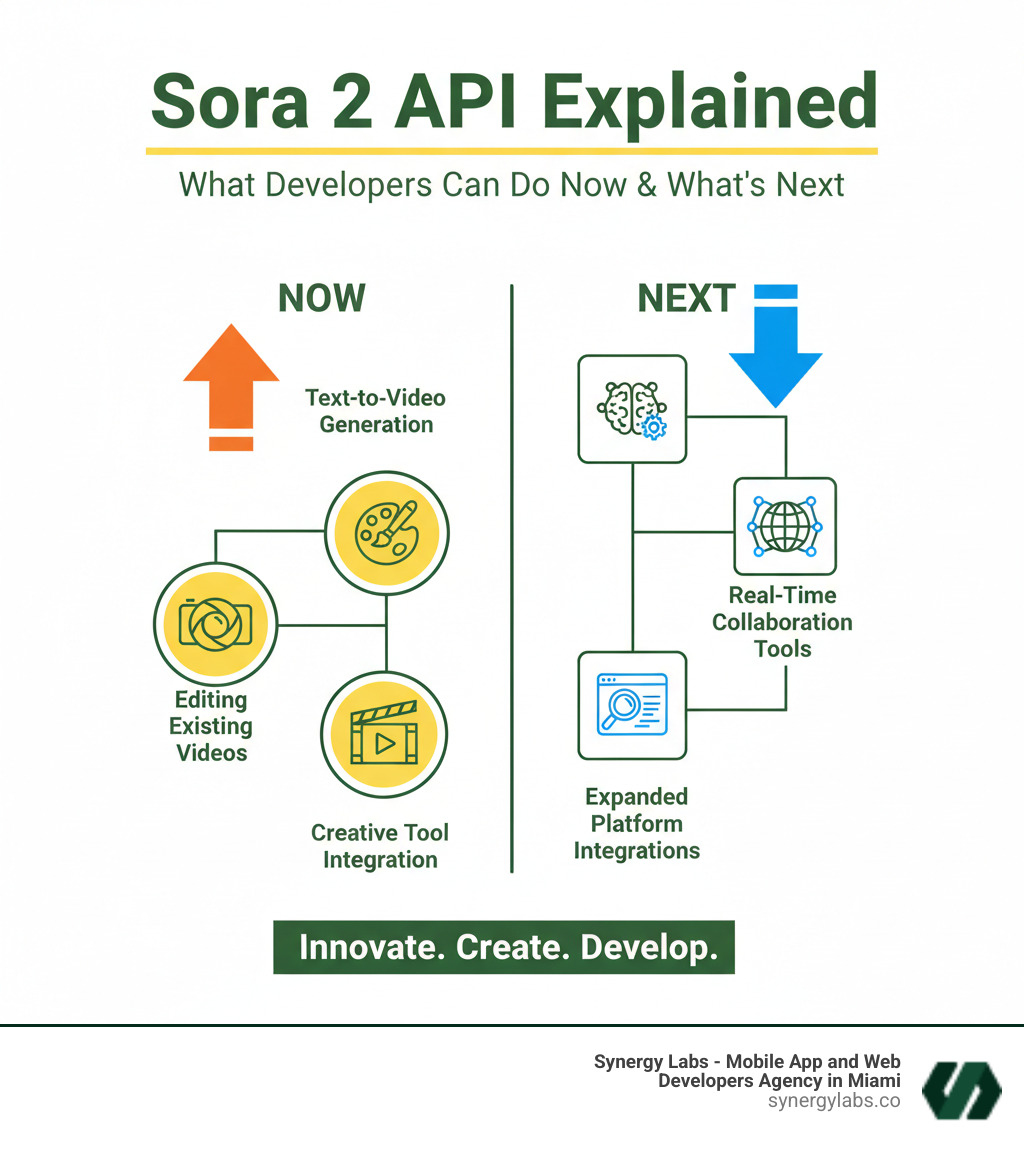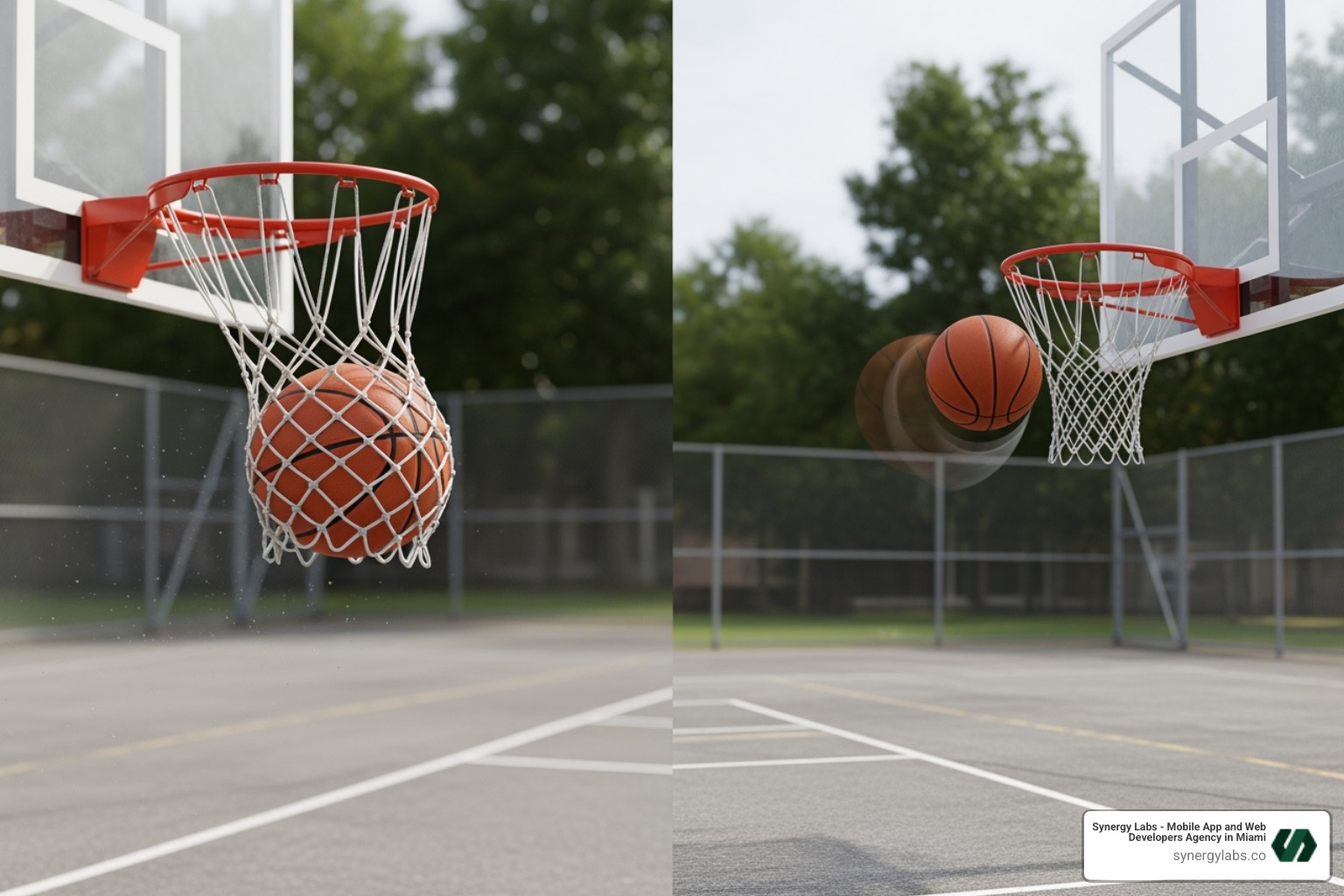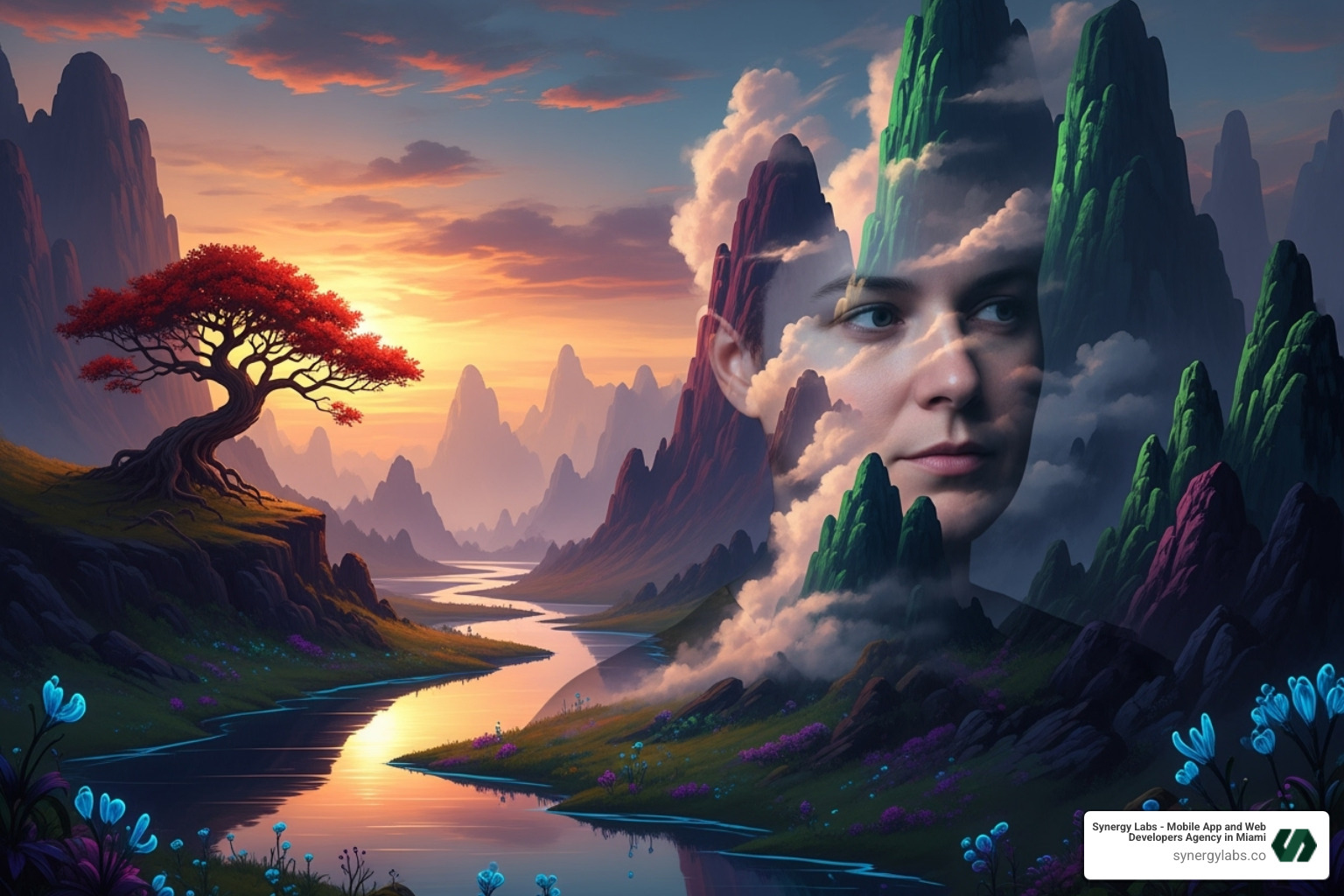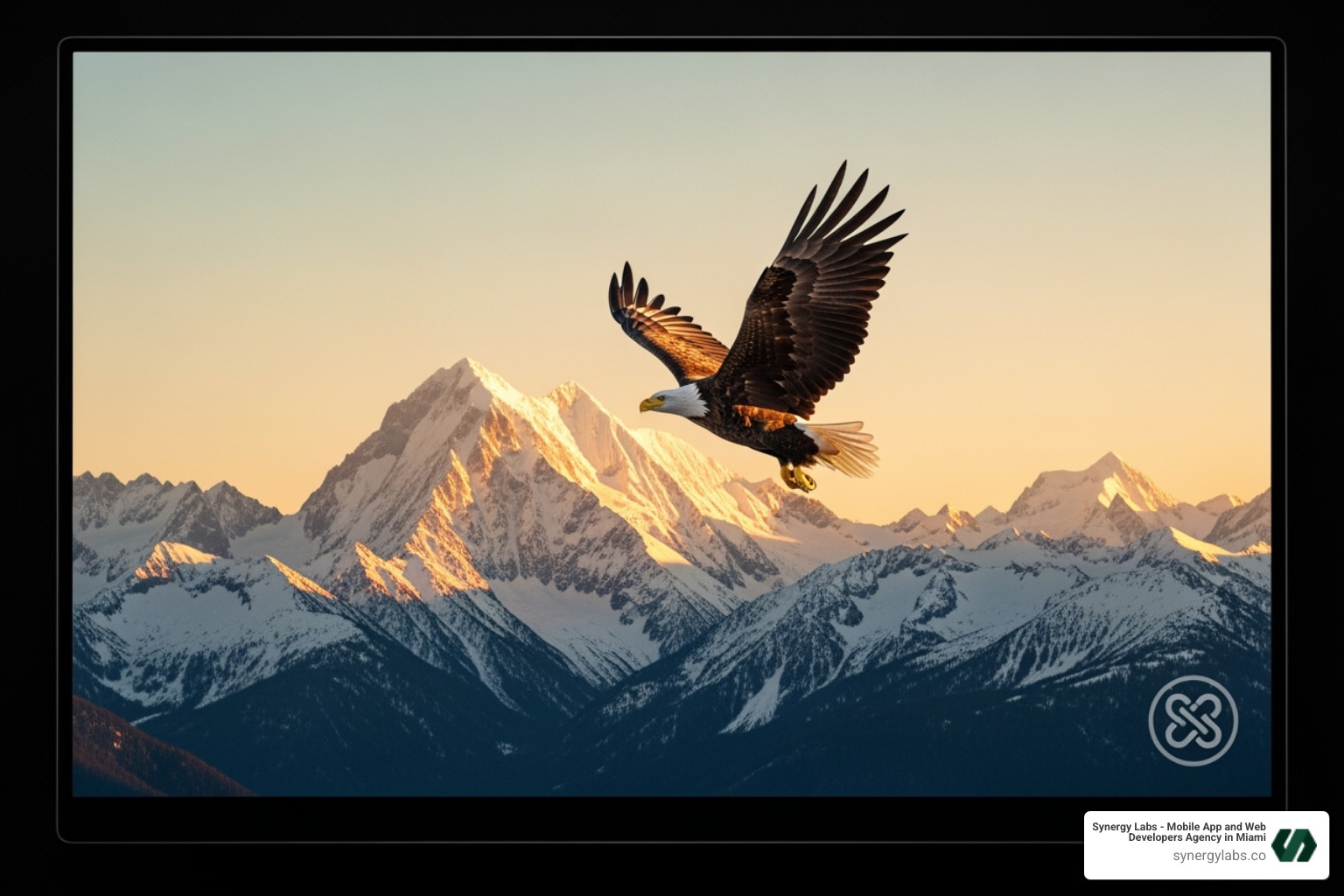Partner with a TOP-TIER Agency
Schedule a meeting via the form here and
we’ll connect you directly with our director of product—no salespeople involved.
Prefer to talk now?
Give us a call at + 1 (645) 444 - 1069
"Many are calling this the "GPT-3.5 moment for video," as the leap in quality and control has developers moving from "wow" to "how do I build with this?"

Sora 2 API Explained: What Developers Can Do Now & What's Next is the question on every developer's mind. Many are calling this the "GPT-3.5 moment for video," as the leap in quality and control has developers moving from "wow" to "how do I build with this?"
Here's what developers need to know right now:
Unlike older models that "morphed reality," Sora 2 understands physics, showing a missed basketball shot bouncing realistically off the backboard. It maintains temporal consistency, generates full audio-visual packages, and includes a consent-based "Cameo" feature for inserting a user's likeness.
The main challenge is the lack of a public REST API, with access restricted to testers, researchers, and select creatives. This creates a gap for startups eager to integrate AI video.
At Synergy Labs, we help startups steer these challenges. Understanding the Sora 2 API Explained: What Developers Can Do Now & What's Next landscape is key to planning your roadmap. Let's break down what's real, what's next, and how to prepare for broader access.

Related content about Sora 2 API Explained: What Developers Can Do Now & What’s Next:

Sora 2 is a massive leap toward AI that understands the physical world. OpenAI's vision is to create a "general-purpose simulator of the physical world," and this release gets remarkably close.
The difference is clear in the videos. Advanced world simulation means the model has a deeper understanding of physics and cause and effect. Instead of objects teleporting, Sora 2 shows what happens when a shot misses, with the ball realistically bouncing off the backboard. This detail makes the output more believable.
This physical accuracy extends to entire sequences. Sora 2 maintains physical consistency, temporal coherence, and spatial awareness across frames. Objects don't randomly change size, shadows behave correctly, and water flows naturally. These details are crucial for building believable applications.
What truly sets Sora 2 apart is how it's better at keeping things consistent across multiple shots. A character's appearance and clothing remain consistent, changing AI video from a novelty into a practical tool for narrative storytelling. You can now craft cohesive sequences that tell a story.
Sora 2 gets exciting for developers because it generates the whole audio-visual package. The model creates complex background noises, specific sound effects, and even dialogue that syncs with character lip movements.
For example, prompt for a busy coffee shop, and you'll hear the murmur of conversations, clinking cups, and the hiss of an espresso machine, all synchronized with the visuals. The audio-visual synchronization is tight enough that dialogue matches on-screen action, preventing mismatches that break immersion.
This integrated approach is a massive time-saver. The model handles video and audio simultaneously, understanding how sounds correspond to visual events. This capability, combined with temporal consistency, enables multi-shot narrative generation. You can describe intricate sequences, and Sora 2 will follow your instructions while maintaining character and environmental consistency. This is transformative for short-form storytelling in marketing, education, and pre-visualization.

Sora 2 gives you finer control over prompts. You can use multi-part prompts to specify details like camera movements, shot sequences, and visual styles. Want a slow dolly zoom or a film noir aesthetic? The model understands and delivers.
This precision is invaluable for integrating AI content into professional workflows. You're not just hoping the AI gets it right—you're directing it.
The most talked-about new feature is Cameo, which allows users to insert their face and voice into any generated scene. This opens up fascinating possibilities for personalized marketing, custom training videos, or creative apps.
Crucially, OpenAI has built a solid consent-based system around this feature. Users must verify their identity and maintain end-to-end control of their likeness, with the ability to revoke access at any time. This responsible approach addresses privacy and ethical concerns, preventing misuse for unauthorized deepfakes.
For developers planning with the Sora 2 API Explained: What Developers Can Do Now & What's Next in mind, these features represent a significant evolution in AI video generation.
After the initial excitement for Sora 2, developers are asking one thing: "How do I use this in my app?" It's the classic developer experience: see something amazing, plan to build with it, then hit the wall of limited access.
OpenAI has confirmed that API access is on the roadmap, signaling its intent to make Sora 2 a platform. However, we're still in the limited access phase. A wider API beta is expected around Q3 2025, with a full public release potentially in late 2025 or early 2026. These dates are tentative, but they provide a reasonable planning horizon.
In the meantime, several pathways exist for developers. At Synergy Labs, we've helped clients steer these scenarios where access to cutting-edge tech is gated. The key is understanding today's options and building an architecture that can adapt. For context on the broader tool landscape, see our guide on Top AI Tools to Create an App in 2024: The Ultimate List.
The Sora App and sora.com are the most direct ways to interact with Sora 2, though not via a traditional API. You can download the Sora app for iOS or visit the website to generate videos manually. Access is currently invite-only, rolling out in the U.S. and Canada. The standard model is free with usage limits, making it great for testing. Sora 2 Pro is included with a ChatGPT Pro subscription.
For enterprise developers, Microsoft offers a limited preview of Sora 2 through its Azure AI platform. This is an asynchronous system: you submit a request and poll an endpoint until the video is ready. The Microsoft Learn documentation details the setup, but access is subject to approval.
The most practical option for many developers comes from third-party API providers. They provide programmatic access to Sora 2 now, filling the gap between demand and official availability. These services are ideal for building proofs-of-concept before the official API launches.
Whether using a third-party provider or preparing for the official API, certain technical practices are crucial for a robust integration. Understanding Sora 2 API Explained: What Developers Can Do Now & What's Next means building a reliable system around video generation.
When the official API launches, using OpenAI's SDKs for Python or JavaScript will streamline development, handling authentication and request formatting so you can focus on application logic. At Synergy Labs, we specialize in these integrations. If you're planning to use Sora 2, learn How to Get More Out of Custom AI Integration in 5 Simple Steps.
Before diving in, understand the costs, limitations, and ethical guardrails of Sora 2. For businesses leveraging AI, smart deployment is key to gaining a competitive edge. For a broader perspective, see AI-Driven Growth: Transforming Business Innovation and Competition.

Sora 2's power comes with a pay-per-second model that scales with version and resolution. For experimentation, Sora 2 Standard is free via the Sora app, while Sora 2 Pro is bundled with a ChatGPT Pro subscription.
For API access, OpenAI's pricing is expected to be around $0.40 per video, with enterprise plans starting at $2,000+ monthly. Until then, third-party providers offer alternatives, with pricing typically based on video length or resolution.
To put this in perspective, a 12-second 720p video might cost $1.20, while a high-resolution Pro version could be $6.00. A full minute of high-res Pro video could cost $30. These costs add up, so optimizing your generation strategy is crucial.
Sora 2 is impressive but not perfect. OpenAI's own Sora 2 system card notes that "the physics are a bit off" in some cases. You may see artifacts like flicker, distortion, or objects behaving unnaturally.
Text generation remains a weak spot, often resulting in gibberish. While temporal consistency has improved, maintaining perfect character details across long, complex sequences can still be a challenge.
Beyond technical quirks, there are serious ethical risks. The realism of Sora 2's output makes it a powerful tool for deepfake misuse, including impersonation and disinformation. Bias is another critical concern, as AI models can perpetuate harmful stereotypes, as reports have noted regarding sexist and ableist bias in earlier versions. Finally, intellectual property and regulatory uncertainty create potential legal and compliance headaches.
OpenAI has built multiple safety layers into Sora 2, as outlined in their guide to launching Sora responsibly.
Every output carries visible watermarks and embeds C2PA-style content credentials to identify it as AI-generated. It is critical that developers preserve these provenance signals.
The model also includes robust content filtering to block harmful material, such as sexual content, graphic violence, and unauthorized use of public figures' likenesses.
For features like Cameo, OpenAI has implemented a solid consent-based system. Users verify their identity and maintain full control over their likeness. Developers must also adhere to strict usage policies, and implementing human review for all generated content is an essential best practice for enterprise applications.
At Synergy Labs, we prioritize responsible AI integration. For more on leveraging AI safely, explore our guide on Top GPT Wrapper Use Cases for Business Automation in 2025.
Sora 2 is a practical tool that's already reshaping content creation. We're seeing a shift toward specialized AI tools that do one thing exceptionally well, a trend we call the Micro Stack Revolution: Why Startups Are Replacing Platforms with Single-Purpose AI Tools. Sora 2 embodies this by focusing on generating professional-grade video with synchronized audio.
Sora 2 is making a real-world difference by reducing time, cutting costs, and expanding creative possibilities across industries.
These applications show how Sora 2 API Explained: What Developers Can Do Now & What's Next is about rethinking creative pipelines. This shift is also changing user experience, a topic we explore in AI-Native UX: Why the Next Great Products Won't Look Like Apps.
The roadmap for Sora 2 is ambitious. A wider beta is expected in Q3 2025, with a full public release likely in late 2025 or early 2026.
OpenAI's long-term vision extends beyond video generation to what they call "general-purpose world simulators." The goal is to create AI that understands physical laws and cause-and-effect, laying the groundwork for applications like training robotic agents in simulated environments or testing autonomous vehicle algorithms.
The OpenAI announcement frames this as progress toward professional tools, but the implications are much broader. We're watching the early stages of AI systems that can model reality with increasing fidelity.
For developers, the message is clear: prepare now. Teams experimenting with Sora 2 today will have a significant advantage when broader access arrives. This evolution is a critical chapter in The Future of AI Startups: Disrupting Tech Giants, PMF Challenges, AI-Driven Design. The companies that integrate this tech first will define the next wave of innovation.
At Synergy Labs, we track these developments to bridge the gap between interesting technology and production-ready solutions. When Sora 2's API becomes widely available, the developers who understand the landscape will be ready to build the future.
We know you still have questions. Let's tackle the most common ones developers have about the Sora 2 API Explained: What Developers Can Do Now & What's Next landscape.
This is the top question. Currently, there is no direct public API. Access is limited to the invite-only Sora app and a restricted Azure OpenAI preview for enterprises.
Based on OpenAI's statements, a wider beta testing phase is expected around Q3 2025. A full public release, where any developer can get an API key, is tentatively planned for late 2025 or early 2026. These timelines are subject to change as OpenAI scales its infrastructure and refines safety measures.
For experimentation, Sora 2 Standard is your best bet. It's free with generous usage limits through the official Sora app or sora.com (invite required). This is perfect for testing prompts and creating proofs-of-concept.
If you have a ChatGPT Pro subscription, Sora 2 Pro is included at no extra cost on sora.com, offering higher quality output.
For programmatic API access, third-party providers are the only current option, with pricing typically based on video length. When it arrives, the official OpenAI API is expected to cost around $0.40 per video.
Yes, absolutely. This is a key feature that sets Sora 2 apart. It generates a complete audio-visual package, not just silent clips.
The model can create synchronized dialogue, specific sound effects (like footsteps or a door closing), and complex background noise (like ambient traffic). The audio is designed to match the on-screen action, with dialogue syncing to lip movements and sound effects aligning with visual events.
This integrated audio generation is a massive time-saver for creators, as it can eliminate the need for separate audio editing workflows, making it a powerful tool for narrative content.
Sora 2's arrival marks a transformative chapter in AI-driven content creation. We've explored its capabilities for realistic video, synchronized audio, and consistent narratives. However, the real challenge for businesses isn't just understanding the technology, it's bridging the gap between its potential and practical, real-world implementation.
Navigating the landscape of the Sora 2 API Explained: What Developers Can Do Now & What's Next means dealing with limited access, evolving pricing, and crucial ethical considerations. This requires a strategic partner who understands both the technology and the business goals.
At Synergy Labs, we help companies in Miami, Dubai, New York City, and beyond turn cutting-edge AI into robust software. We provide direct access to senior talent who specialize in AI integration, from prompt optimization to preserving content credentials. The gap between "this is amazing" and "this is working in production" is where many projects stall, and it's where we excel.
Our commitment to user-centered design and robust security ensures your AI-powered applications are intuitive, reliable, and trustworthy.
If you're ready to integrate cutting-edge AI like Sora into your applications and build scalable, innovative solutions, explore our AI infusion services. Let's work together to turn AI potential into your business reality. For more on our expertise, visit our Top AI Developers page.

Getting started is easy! Simply reach out to us by sharing your idea through our contact form. One of our team members will respond within one working day via email or phone to discuss your project in detail. We’re excited to help you turn your vision into reality!
Choosing SynergyLabs means partnering with a top-tier boutique mobile app development agency that prioritizes your needs. Our fully U.S.-based team is dedicated to delivering high-quality, scalable, and cross-platform apps quickly and affordably. We focus on personalized service, ensuring that you work directly with senior talent throughout your project. Our commitment to innovation, client satisfaction, and transparent communication sets us apart from other agencies. With SynergyLabs, you can trust that your vision will be brought to life with expertise and care.
We typically launch apps within 6 to 8 weeks, depending on the complexity and features of your project. Our streamlined development process ensures that you can bring your app to market quickly while still receiving a high-quality product.
Our cross-platform development method allows us to create both web and mobile applications simultaneously. This means your mobile app will be available on both iOS and Android, ensuring a broad reach and a seamless user experience across all devices. Our approach helps you save time and resources while maximizing your app's potential.
At SynergyLabs, we utilize a variety of programming languages and frameworks to best suit your project’s needs. For cross-platform development, we use Flutter or Flutterflow, which allows us to efficiently support web, Android, and iOS with a single codebase—ideal for projects with tight budgets. For native applications, we employ Swift for iOS and Kotlin for Android applications.




For web applications, we combine frontend layout frameworks like Ant Design, or Material Design with React. On the backend, we typically use Laravel or Yii2 for monolithic projects, and Node.js for serverless architectures.






Additionally, we can support various technologies, including Microsoft Azure, Google Cloud, Firebase, Amazon Web Services (AWS), React Native, Docker, NGINX, Apache, and more. This diverse skill set enables us to deliver robust and scalable solutions tailored to your specific requirements.








Security is a top priority for us. We implement industry-standard security measures, including data encryption, secure coding practices, and regular security audits, to protect your app and user data.
Yes, we offer ongoing support, maintenance, and updates for your app. After completing your project, you will receive up to 4 weeks of complimentary maintenance to ensure everything runs smoothly. Following this period, we provide flexible ongoing support options tailored to your needs, so you can focus on growing your business while we handle your app's maintenance and updates.